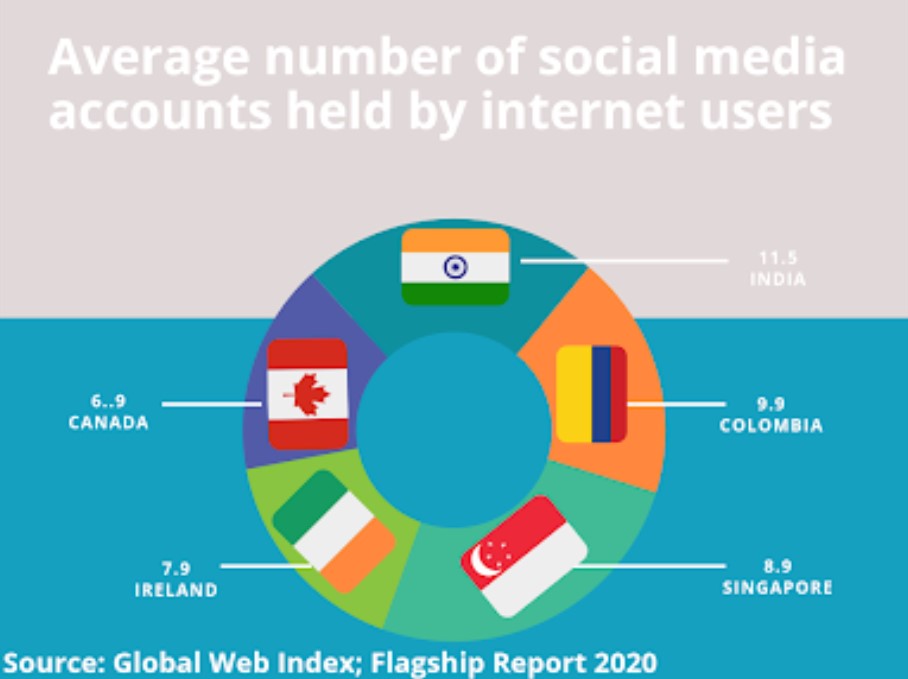
Social media audits provide a way to measure the impact of your client’s online presence. For a successful audit to be successful, there are six key steps. These steps include monitoring metrics, preparing for the audit, and assessing your client’s social media presence. To ensure your audit's success, organize it and make sure you are focusing on the right metrics.
Here are six steps to conduct a social media audit
No matter if you're a startup or a business with established customers, there are several steps you can take to conduct a social media audit. The first step is to identify the platforms where you are currently active. Analyze the engagement rates and performance on these platforms. Additionally, it is important to examine the costs associated with each social media marketing campaign. A social media audit is useful in determining whether you are wasting money or generating more leads.
It is crucial to have a template for social media audits. This will show you how to collect and analyze results. A template that is well-designed will contain the details of each platform as well as a summary of overall performance and a detailed report of how the different elements performed. For instance, the demographics section should provide information on how many people viewed your content, and where they were located. A second section should include the creative performance for your top posts.

Assessing the social media presence of your client
Social media analytics can be valuable for gauging a campaign's effectiveness. It can also give your client a glimpse of what content is working for them. Social media analytics report templates should include metrics for each social media platform. These include engagement, followers, and demographics. These are some ways to create the perfect report.
Determine the client's target audience. If the client has a specific target audience, the social media strategy should be tailored for them. If your client doesn't have a very specific audience, you can adjust the strategy and find other ways to reach them. You should also consider the various social media platforms that your client uses. If you work with a brand that caters to Generation Zs you might consider Snapchat or TikTok as an alternative to Facebook.
Effectiveness can be measured by tracking metrics
Social media marketing requires the tracking of metrics. The metrics are very similar to traditional marketing metrics, such as recall, awareness, recall, sales funnel, and recall. This data will allow you to evaluate how your content is performing towards your goals. You can use this data to optimize your social media campaigns.
Social media performance is an important area in any audit. This can be measured with tools such as Facebook page insights or Twitter Followerwonk. You should also consider audience growth and posting frequency. Track engagement through likes. Shares. and +1s.

Successful audits are based on organization and preparation.
A social media audit is an excellent way to streamline marketing efforts and eliminate irrelevant efforts. If your messages are scattered across many platforms, you will lose your core messages and leave your followers feeling confused. An audit will also show you which social media platforms work best and which don't.
It doesn’t matter whether you are doing a social audit by yourself or using an agency. You need to be prepared and follow a specific process. Before you start, assess your company model and determine your overall objectives. This can be done by asking questions of your client and getting some background information on your business model.
FAQ
How much does content marketing cost?
The price of content marketing varies depending on whether you're looking for an outsourced solution or you're going to handle everything yourself. Outsourcing content market services is often cheaper than hiring fulltime employees. This allows you to scale quickly, when you need it.
According to HubSpot research, outsourcing content production costs around $5 per lead generated (for B2B companies) compared to $22 per lead generated (for consumer brands).
You can find many free tools on the internet that will help you create content that converts.
There are many ways to create optimized content for search engines like Google and Bing. For example, you can write original articles, guest post on blogs, curate content from other websites, and repurpose existing materials.
If you choose to produce your own content, then you must learn how to make great content. Producing content will become relatively simple once you've mastered it.
You can start by creating simple landing pages using WordPress and then move on to building out your site. You can then build your portfolio over time.
What is content marketing's main goal?
Content marketing provides valuable and relevant information to customers. This can be done by various channels like email campaigns, whitepapers, or blog articles. Your audience should be able to see the value you are providing.
What is the difference between content marketing and traditional advertising?
Traditional advertising is focused on attracting attention. Content marketing is about providing value. Traditional advertising is often a waste of money because most people ignore it. Content marketing will result in much higher engagement rates.
What is Content marketing?
It involves creating useful and relevant content on your website. This content could include text, images and infographics.
Can I simply post links to other sites content?
Yes! This is link building. Linking back to another site's content is a great way to increase traffic to your site. However, be sure only to include links to reputable sources.
Why do I need a Content Marketing Strategy? Why should I not only send out emails, but also post social media updates.
Two main reasons you might choose to ignore a Content Marketing Strategy.
-
It might seem that social media posts and email marketing are sufficient to get people talking.
-
If you've never tried email marketing, or posted on social networks, it's easy to assume this type of content is not feasible.
Both assumptions are false.
Email marketing and social media posts can be great ways to communicate with customers and prospects. However, these are not sufficient.
Your goals can't be achieved by an email campaign. It should be part of a larger strategy. Social media posts are not enough to achieve your goals. They must be part of a comprehensive plan.
This is where a Content Marketing Strategy can help. A Content Marketing Strategy is a plan that sets clear goals for each piece. This will allow you to manage the entire content creation process.
You'll have more time to concentrate on other important aspects of running your company, such as growing your audience and increasing conversions.
And even though there are many benefits to having a Content Marketing Strategy, it doesn't mean it's easy.
But, when you have a strategy in place, it makes all the difference.
How does Content Marketing work?
Your site is visited by someone who is looking for something. Good for them if they find the information they seek. If they don't, they'll move on to the next provider. Content marketing helps you provide useful and valuable information that answers questions and solves problems. This content is easily accessible across all channels (email, social media, etc.). You can use this content across all platforms (social media, email, etc.) so that people always have access.
Statistics
- Seventy-two percent business to business (B2B) (mailchimp.com)
- Out of the 1,500 marketers we surveyed for our State of Content Marketing report, 78% who felt their content marketing strategy was exceptionally effective in 2021 had documented their strategy. (semrush.com)
- This marketing strategy landed Ford a 15.4% conversion rate. (neilpatel.com)
- According to research compiled by Coschedule: Companies that publish 16+ blog posts a month get as much as 3.5x as much traffic as those that publish 0-4 posts a month. (criteo.com)
- According to our research, brand awareness, attracting traffic, and generating leads remain the key content marketing goals in 2022. (semrush.com)
- Measure your goals with a progress indicator of 0-100%. Make your goals collaborative and transparent (semrush.com)
- Forty-seven percent of buyers view 3 to 5 pieces of content before engaging with a sales representative. (mailchimp.com)
- An example of an overarching goal could be: "In 2022, we want to achieve a 20% increase in revenue created by organic content and generate 15,000 MQLs with a budget of $30,000." (semrush.com)
External Links
How To
Why should you create a Content Marketing Plan? Why Not Now?
It is easy to feel overwhelmed when you start content marketing. You don't need to do everything at once, but it is possible. Start small.
Begin with one thing at a time. If you try to do too much at once, you risk spreading yourself thin and not making progress. Focus on one thing at the time until you master it.
Start Small. Don't stress about perfecting every aspect your content marketing plan. Only focus on one area of content marketing at time. As you get more comfortable, you'll naturally expand your efforts.
Build On Previous Successes. If you've already developed a strong reputation and following on social media, then why not leverage your existing network? Reach out and ask industry leaders if you'd like to have your content promoted. Or, you can organize an event for bloggers.
Start somewhere even if you've never made content before. Start with something simple. Maybe you'll write a blog post, launch a webinar, or even just host a live Q&A session. Regardless of what you do, ensure that you have the ability to measure its effectiveness.